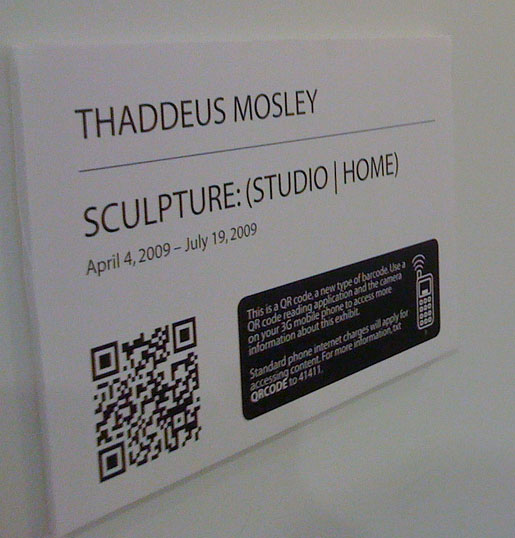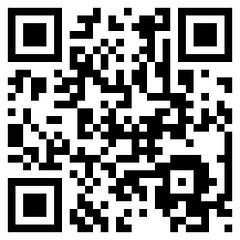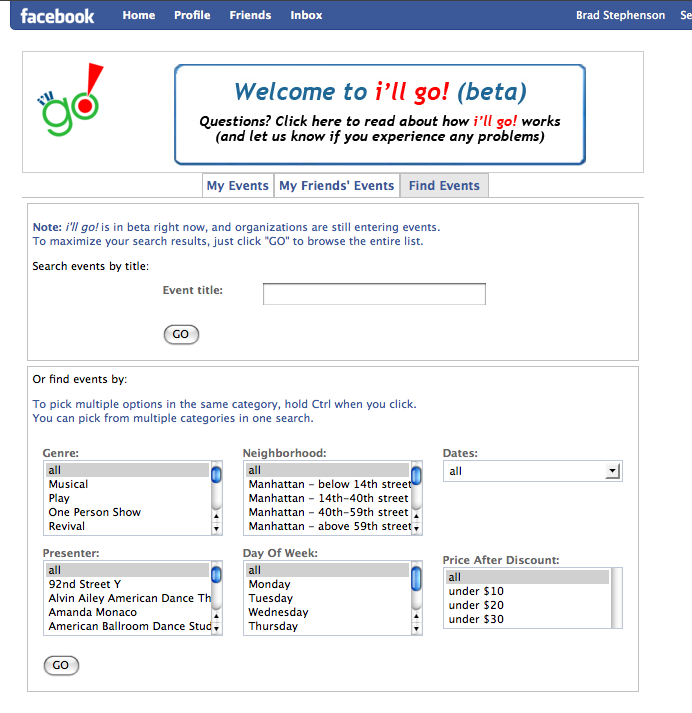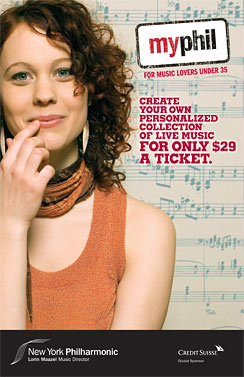 If you have been to the Mattress Factory recently to see the new Thaddeus Mosley exhibition, you may have noticed that the title cards and some of the minimal signage have these intricate symbols on them. What you're seeing is a two dimensional bar code called a QR code that can be used to access information via your mobile internet enabled devices such as an iPhone or Blackberry.
If you have been to the Mattress Factory recently to see the new Thaddeus Mosley exhibition, you may have noticed that the title cards and some of the minimal signage have these intricate symbols on them. What you're seeing is a two dimensional bar code called a QR code that can be used to access information via your mobile internet enabled devices such as an iPhone or Blackberry.
The code on the image above for instance, contains a link to a Youtube video of Thaddeus Mosley discussing the placement of large scale works within the gallery space.
Once you are in the gallery you can text QRCODE to 41411 to receive a simple walk through that tests to see if your phone is compatible with the suggested reader. The BeeTagg reader supports over 50 types of mobile devices and is available as an iPhone application as well.
After you have the reader installed you can access information from signage posted throughout the gallery space. Much like the guide by cell program, there is no proprietary equipment for the museum to pay for beyond the fabrication of the signage and developing the web content. However unlike a guided tour, this allows visitors to explore the space and access information that they are interested in when they want to.
Director of PR + Social Media, Jeffrey Inscho was kind enough to give me a guided tour on Thursday and pointed out some of the kinks that he is still working out. While most of the QR codes bring up URLs on your mobile device, some of them are text only which makes the codes much more dense. This can make it more difficult to take an accurate enough picture for your phone to recognize and decode the data. The smallest that the QR codes can be printed and still be read by most of the camera-phones on the market is about 1.5" square. So the text only cards may end up being replaced with a URL of the text to help ensure that they can be read. Shadows also tend to cause some issues while taking pictures, so you have to watch where you stand.
For the recent Predrive event, before they had installed the signage in the gallery, the Mattress Factory included a QR tag on their advertisement in the City Paper and received around 72 hits, which was more than Jeffrey had expected. Over the course of the exhibition the Mattress Factory will be able to monitor which tags receive the most hits, and get a feel as to how people are using the signage when visiting the museum.

As of right now, the Mattress Factory is the only museum in the United States that is currently using QR tags within the exhibition space, but the Powerhouse Museum in Sydney Australia has been using them for a a while and have outlined many of the issues that have cropped up in an amazingly detailed step by step guide.
Jeffery stressed that this was an experiment and an effort to help reduce the amount of printed gallery guides they use. It is not a permanent replacement for the printed material, but as the technology becomes more prevalent the QR codes will provide more in depth interaction and information to the visitors.
As of right now the Mattress Factory plans on continuing to use this new technology for future exhibitions and already has some just flat out amazing ideas on how to incorporate it into their Annual Garden Party but I don't want to spoil the surprise.
Best arguement thus far as to why I should update my phone from the bottom of the line Nokia I'm using.








